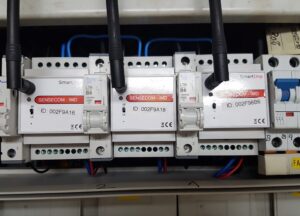Machines usage monitoring and overload detection
Remote monitoring with SENSECOM-IMD series
A machine factory in Finland offers, in addition to its main production, rentals of currently unused machinery of up to 150 machines (milling machines, lathes, presses, etc.). In the past, rentals have often led to overloading of machines, which has shortened their lifetime and increased maintenance and repair costs. Finding a relatively simple way of ensuring compliance with the terms of the lease was key to these leases.
When the workstation was handed back to the lessor after the rental, the maintenance technician checked the condition of the machine and tools, the possible extent of excessive wear or damage and recorded everything. The tenant was then invoiced for any extra costs associated with excessive wear and tear, but these were often disputed. The factory also attempted to increase the overall rental prices to compensate for the excessive wear and tear. However, this reduced interest in renting and disadvantaged honest tenants.
With the monitoring of peak energy consumption of rental machines, the factory has gained a very effective tool to efficiently provide and manage rental machines, which today has an equivalent economic benefit to them as their own core production.
The SENSECOM-IMD meter reading device is mainly deployed where electricity consumption needs to be monitored continuously. The S0 pulse interface is the most common interface of almost all electricity meters and many other consumption meters. SENSECOM-IMD is preferably deployed with billing meters because it already has a built-in galvanic isolation of the S0 input and there is no need to insert an additional signal separator, which makes the investment in readings more expensive.
Machines usage monitoring and overload detection
Energy consumption remote monitoring using nation-wide communication network SIGFOX
Energy consumption remote monitoring including consumption peaks detection using nation-wide communication network NB-IoT
Energy consumption remote monitoring models


